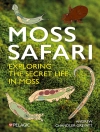This book introduces the concept of bacterial communication systems from a mathematical modeling point of view. It sheds light on the research undertaken in the last three decades, and the mathematical models that have been proposed to understand the underlying mechanism of such systems. These communication systems are related to quorum sensing mechanisms and quorum sensing regulated processes such as biofilm formation, gene expression, bioluminescence, swarming and virulence.
The book further describes the phenomenon of noise, and discusses how noise plays a crucial role in gene expression and the quorum sensing circuit operationusing a set of tools like frequency domain analysis, power spectral density, stochastic simulation and the whitening effect. It also explores various aspects of synthetic biology (related to bacterial communication), such as genetic toggle switch, bistable gene regulatory networks, transcriptional repressor systems, pattern formation, syntheticcooperation, predator-prey synthetic systems, dynamical quorum sensing, synchronized quorum of genetic clocks, role of noise in synthetic biology, the Turing test and stochastic Turing test.
Tabela de Conteúdo
Chapter 1. Introduction.- Chapter 2. Talking about talking microbes.- Chapter 3. Mathematical models of quorum sensing molecular mechanisms.- Chapter 4. Mathematical models of quorum sensing regulated biofilms development.- Chapter 5. Mathematical models of bacterial swarming behaviour regulated by quorum sensing. Chapter 6. Mathematical models of bacterial quorum sensing regulated virulence factors.- Chapter 7. Evolutionary models of bacterial communication systems.- Chapter 8. Pattern formation in bacterial conversation mechanisms.- Chapter 9. Summary of Experimental Results.- Chapter 10. Therapy related mathematical models and quorum quenching.- Chapter 11. Role of noise in microbial communication.- Chapter 12. Electrical communication systems in bacterial biofilms and ion-channels.- Chapter 13. Synthetic biology and microbial communication.- Chapter 14. Role of Noise in Synthetic Biology.-Chapter 15 Noise in Science and Technology Vs Biological System.
Sobre o autor
Sarangam Majumdar is a mathematician. He holds a Bachelor of Science and Master of Science in Mathematics from the University of Calcutta (2010) and National Institute of Technology, Rourkela (2012), respectively. He has worked with Prof. Sisir Roy, Indian Statistical Institute, Kolkata; Prof. Rodolfo Llinas, New York University School of Medicine, USA; Prof. Dr. Suman Datta, University of Calcutta; Prof. S. Chakraverty, National Institute of Technology, Rourkela; Dr. Sukla Pal, University of Otago, New Zeland; Prof. Rodolfo Repetto, Dipartimento di Ingegneriadelle Costruzioni, dell’Ambiente e del Territorio, Università degl i Studi di Genova, Italy; Prof. Nicola Guglielmi, Università degli Studi di L’ Aquila and many more. His research interests include mathematical biology, system biology, mathematical modeling, numerical analysis, scientific computing, nonlinear dynamics and chaos, and over the past eight yearshe has focused on bacterial communication systems (quorum sensing, electrical communication). He has published several papers in various peer-reviewed, international journals and book chapters (in Springer). He is also a reviewer for a number of international journals.
Prof. Sisir Roy is a theoretical physicist currently working as a Visiting Professor and Senior Homi Bhabha Fellow, National Institute of Advanced Studies, IISc Campus, Bangalore. Previously he worked as a Professor at the Physics and Applied Mathematics Unit, Indian Statistical Institute, Kolkata from 1980 to 2014, and as a Visiting Scientist at the Institute Henri Poincare, Paris, France, from 1986 to 87. He has also worked as a Distinguished Visiting Professor at numerous US and European Universities. He has collaborated with Prof. J.P. Vigier, France; Prof. Bo Lehnert, Alfven Laboratory, Sweden; Prof. Menas Kafatos, George Mason University; Prof. Ralph Abraham, University of California; and Prof. Rodolfo Llinas, New York University School of Medicine, NY, USA. Hismain interests includethe foundations of quantum theory, theoretical astrophysics, quantum biology, brain function modeling and higher-order cognitive activities. He has published more than two hundred papers in various peer-reviewed, international journals, twelve monographs and edited volumes published by Kluwer Academic Publishers, World Scientific, Singapore, Springer and others. He is currently a member of the editorial boards of various international journals. His recent books include: Sisir Roy (2016) Decision making and modeling in cognitive science, Springer












